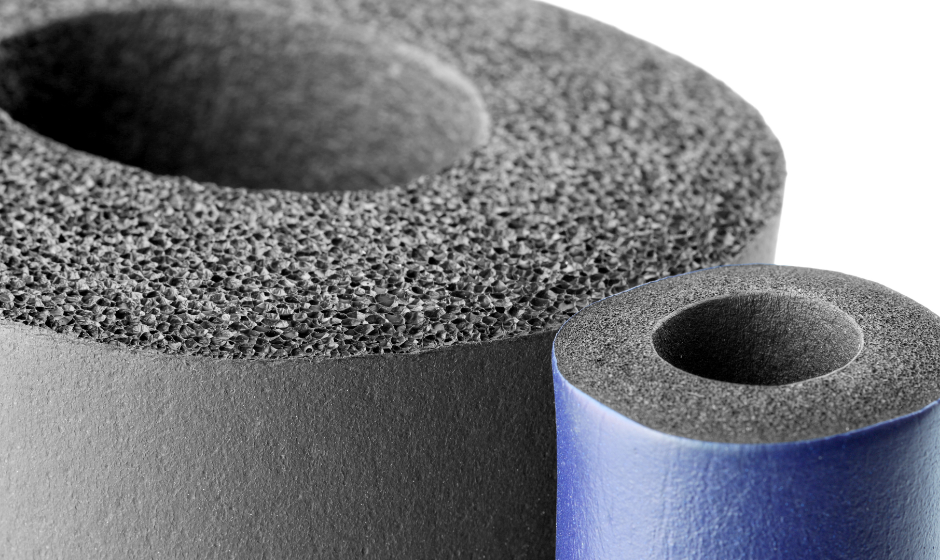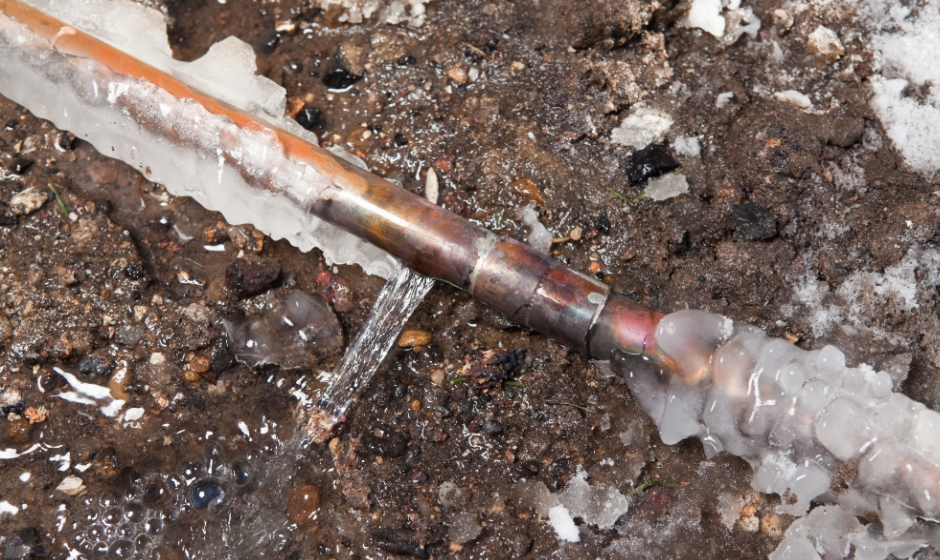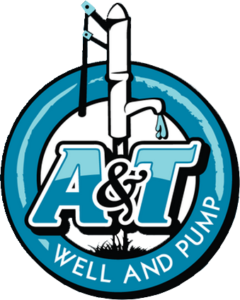Water well hand pumps seem to be making a comeback. We cover two different types…
As the temperatures drop and winter sets in, ensuring the proper functioning of your water well becomes crucial. Cold weather can pose significant challenges to water wells, potentially leading to frozen well pipes, decreased water flow, and even system damage if not adequately addressed.
To help you navigate the winter months and keep your water well in optimal condition, our water well service experts from A&T Well and Pump in Raleigh, NC have compiled the top 5 cold weather tips for water wells in order to avoid frozen well pipes.
From insulating exposed pipes to scheduling regular maintenance with a professional, these tips will help you safeguard your well against the harsh conditions of winter and ensure a reliable water supply throughout the season.
What Causes a Frozen Water Well?
Frozen water well pipes can be a significant concern for homeowners, particularly during the cold winter months. Understanding the factors that contribute to frozen well pipes is crucial for prevention and timely intervention.
Subzero Temperatures
When temperatures plummet below freezing, the water within the well and its associated components, such as pipes and pump systems, can freeze. This can occur both above and below ground level, depending on the exposure to cold air and insulation levels.
Lack of Insulation
Exposed pipes, wellheads, and pressure tanks are particularly vulnerable to freezing if not adequately insulated. Without proper insulation, these elements are susceptible to rapid temperature changes and freezing when exposed to cold air.
Shallow Well Depth
Wells that are relatively shallow are more prone to freezing compared to deeper wells. Shallow wells have less thermal mass to buffer against temperature fluctuations, making them more susceptible to freezing when the surrounding ground temperature drops.
Inadequate Heat Source
Another common cause of frozen water wells is the absence of a reliable heat source within the well house or enclosure. Without sufficient heating, the temperature inside the well house can drop significantly, leading to the freezing of water and frozen well pipes.
Lack of Water Movement
The absence of water movement allows temperatures to drop to levels where freezing can occur more readily. Stagnant water in pipes and pressure tanks can freeze, leading to blockages and potential damage to the system.
Leaking Pipes
Leaking pipes can introduce cold air into the well system, increasing the likelihood of freezing. As water seeps out of the pipes, it can freeze on the exterior surfaces, gradually building up and obstructing water flow. Additionally, the constant influx of cold air through leaks can lower the overall temperature within the well system, further promoting the likelihood of frozen well pipes..
Wind Chill Factor
Wind can exacerbate the effects of cold temperatures, particularly in exposed areas. Wind chill can lower the perceived temperature and accelerate the freezing process by removing heat from the well and its components more rapidly.
Tip 1: Insulate Exposed Pipes and Components
One of the most effective ways to prevent frozen water wells is by insulating exposed pipes and components. When temperatures drop, exposed pipes and vulnerable parts of the well system become susceptible to freezing, which can lead to costly damage and disruptions in water supply.
Here's why insulating these elements is crucial:
- Prevents Heat Loss
- Protects Against Freezing
- Minimizes Energy Consumption
Foam Pipe Insulation

Available in various sizes and easy to install, foam insulation sleeves can be fitted snugly around pipes to provide insulation and protection against freezing. These sleeves are typically made of closed-cell foam, which offers excellent thermal insulation properties.
Heat Tape
Heat tape is designed to generate heat when plugged in, helping to keep pipes warm and prevent frozen well pipes throughout winter. It can be wrapped around exposed pipes and components, providing continuous warmth to prevent the formation of ice.
Insulated Covers for Wellheads
Wellheads, which are the above-ground components of the water well system, are particularly vulnerable to freezing. Insulated covers or enclosures can be installed over wellheads to provide protection against cold temperatures.
Tip 2: Keep the Well House or Enclosure Heated
Well houses typically house important components of the well system, such as pressure tanks, pumps, and control mechanisms. Keeping these components adequately heated helps ensure that water continues to flow smoothly, even in freezing temperatures.
Here's why heating the well house or enclosure is crucial to avoid frozen well pipes:
- Prevents Freezing of Components
- Protects Against Cold Air Infiltration
- Preserves Equipment Performance
Space Heaters
Electric space heaters can be placed inside the well house and powered using an electrical outlet. Look for space heaters with built-in thermostats and safety features, such as automatic shut-off in case of overheating or tip-over protection.
Heat Lamps
Heat lamps emit radiant heat, which can warm up the surrounding air and surfaces within the well house. Position heat lamps strategically to ensure even distribution of heat and avoid direct contact with flammable materials.
Thermostatically Controlled Heaters
Thermostatically controlled heaters are designed to maintain a consistent temperature within the well house by automatically adjusting the heat output based on the ambient temperature. These heaters are equipped with built-in thermostats that allow you to set the desired temperature range, ensuring efficient heating while minimizing energy consumption.
Tip 3: Maintain a Slow Flow of Water
During cold weather, maintaining a slow flow of water through your water well system is an effective strategy for preventing frozen well pipes and ensuring continuous water supply. Stagnant water is more prone to freezing, especially in exposed pipes and components, whereas moving water is less likely to freeze due to its constant motion and frictional heat generation.
Here's why maintaining a slow flow of water is important:
- Prevents Freezing
- Reduces Ice Formation
- Preserves Pump Efficiency
Leave Faucets Dripping
Allowing faucets to drip slowly can help maintain a continuous flow of water through the pipes, especially in areas prone to freezing. Even a small trickle of water can make a significant difference in preventing frozen well pipes by keeping water moving through the system.
Install a Recirculation System
Recirculation systems continuously pump water from the well through the pipes and back into the well, ensuring a constant flow of water and preventing stagnation. These systems can be equipped with timers or sensors to regulate water flow based on temperature and demand, optimizing energy efficiency while preventing freezing.
Use a Constant Pressure System
Constant pressure systems maintain a steady water pressure throughout the plumbing system by adjusting the speed of the pump motor based on demand. These systems ensure a consistent flow of water, even during periods of low demand, helping to prevent freezing and maintain water pressure in cold weather.
Tip 4: Regularly Check for Leaks and Repair Them Promptly
Regular inspection and prompt repair of leaks in your water well system are essential for preventing freezing and maintaining its efficiency, especially during cold weather. Leaks not only waste water and increase utility bills but also introduce cold air into the system, increasing the risk of frozen well pipes and other components.
Here's why checking for leaks and repairing them promptly is crucial:
- Prevents Water Loss
- Minimizes Cold Air Infiltration
- Prevents Damage to Pipes and Components
Inspect Visible Pipes
Regularly inspect visible pipes, fittings, and connections for signs of leakage, such as wet spots, corrosion, or mineral deposits. Pay attention to areas where pipes are exposed to cold temperatures or vulnerable to physical damage, such as near exterior walls, in unheated spaces, or underground.
Conduct a Dye Test
Perform a dye test to identify hidden leaks in the water well system. Add a few drops of food coloring or dye into the toilet tank or a sink drain connected to the system. If the dye appears in the well water or at other fixtures, it indicates a leak in the plumbing system that requires prompt repair.
Promptly Repair Identified Leaks
Upon identifying leaks, promptly repair them to prevent further water loss and potential freezing. Depending on the severity and location of the leak, repairs may involve tightening connections, replacing damaged pipes or fittings, or applying sealants or pipe wraps.

Tip 5: Schedule Regular Maintenance with a Professional
Regular water well maintenance conducted by a professional is vital for ensuring the optimal performance, longevity, and reliability of your water well system, particularly during cold weather. Professional maintenance involves thorough inspection, testing, and servicing of all components of the water well system to identify any potential issues and address them before they escalate.
Here's why scheduling regular maintenance with a professional well pump repair contractor is essential:
- Ensures System Efficiency
- Identifies Potential Problems
- Ensures Water Quality
- Extends Lifespan of Components
Inspection of the Pump and Pressure Tank
Well repair and replacement professionals will inspect the pump and pressure tank for signs of wear, corrosion, or damage. They will also check the pressure settings and performance of the pump to ensure optimal operation.
Testing the Well's Water Quality
Water quality testing involves analyzing the water drawn from the well for various parameters, including pH, turbidity, hardness, and microbial well contamination. Professionals will conduct comprehensive water quality tests to ensure that the water meets safety and regulatory standards.
Assessing the Overall Condition of the Well System
Well and well pump maintenance experts will assess the overall condition of the well system, including pipes, fittings, valves, and electrical connections. They will look for signs of leaks, corrosion, or structural damage that may compromise the integrity and performance of the system.
Worried About Frozen Well Pipes This Winter? Contact Our Well Maintenance Professionals Today!
Don't let frozen well pipes disrupt your water supply this winter. Take proactive steps to safeguard your water well system by scheduling maintenance with our experienced professionals today. As we go deeper in the colder months, the temperatures will start to fall in the Raleigh, Durham, Chapel Hill, and Triangle areas. Therefore, it is critical to prepare your home and well system for the upcoming winter months.
Our team specializes in comprehensive well maintenance services. With our expertise and attention to detail, we'll ensure that your water well remains operational, efficient, and reliable, even in the coldest of temperatures. Call A&T Well and Pump Repair in Raleigh at (919) 291-4063 to schedule an appointment for a video well inspection or fill out the contact form below to get started.
Contact Form
We would love to hear from you! Please fill out this form and we will get back to you shortly.
"*" indicates required fields

